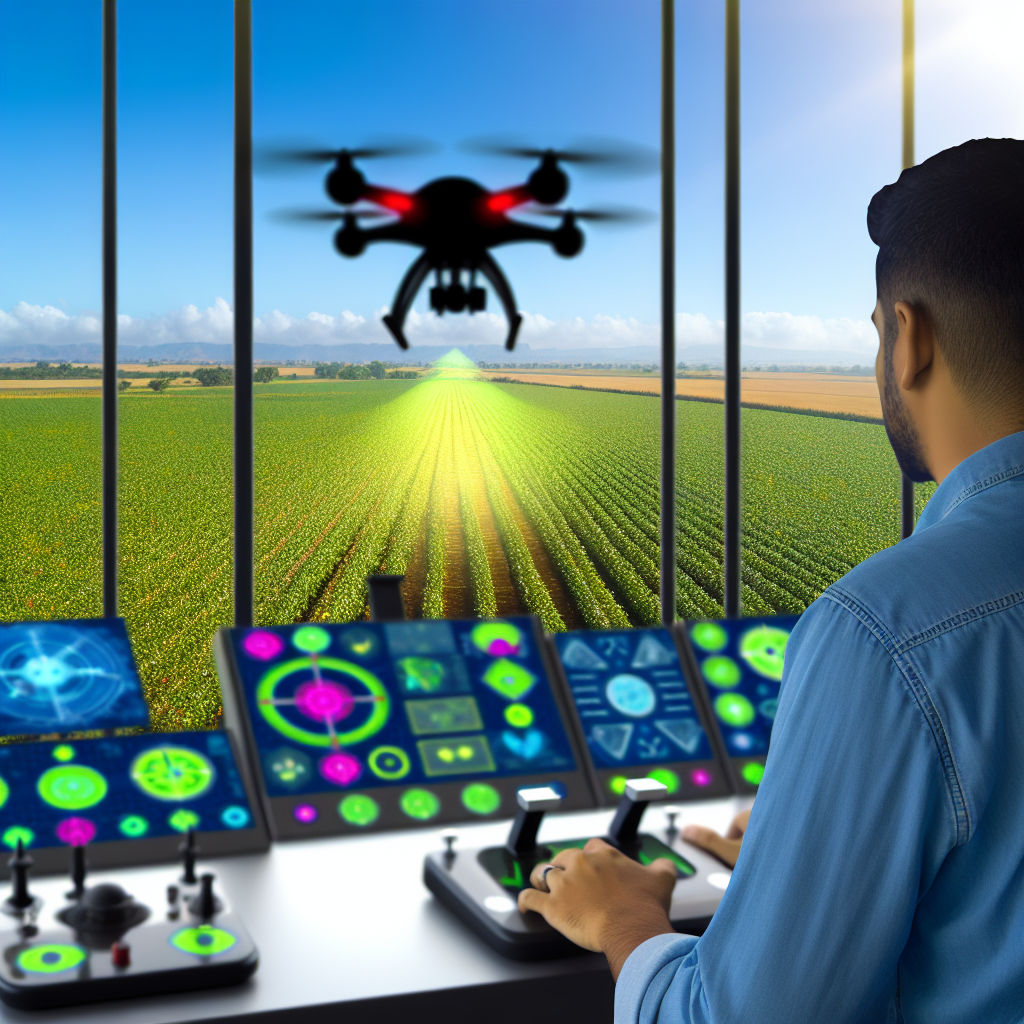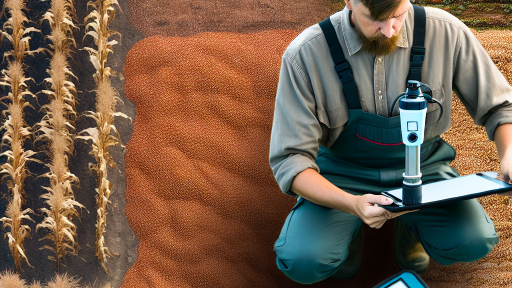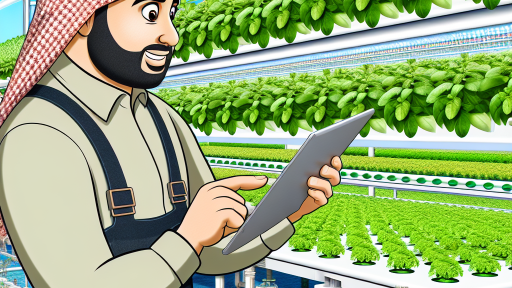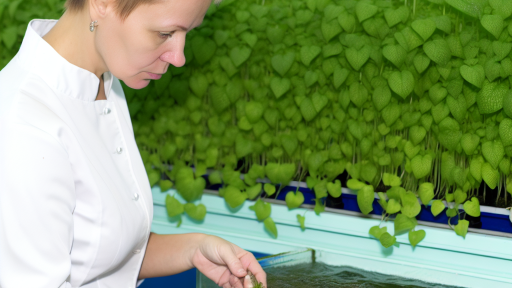Introduction to Drone Technology in Agriculture
Drone technology revolutionizes the agricultural sector.
Farmers increasingly adopt drones for effective crop monitoring.
These devices provide critical data on crop health and growth.
They offer real-time insights into field conditions.
Moreover, drones significantly improve agricultural efficiency.
Enhanced Crop Observation
Drones equip farmers with high-resolution aerial imagery.
This imagery enables detailed observation of crops.
Farmers can identify problem areas rapidly and accurately.
Additionally, drones help track crop growth stages effectively.
Consequently, farmers make informed decisions about interventions.
Data Collection and Analysis
Advanced sensors on drones collect diverse data types.
These include temperature, humidity, and soil moisture levels.
Farmers analyze this data to assess crop health.
They can monitor pest infestations and disease outbreaks.
Furthermore, data analytics helps optimize resource allocation.
Transform Your Agribusiness
Unlock your farm's potential with expert advice tailored to your needs. Get actionable steps that drive real results.
Get StartedCost-Effectiveness and Sustainability
Drones reduce the labor and time required for field surveys.
This leads to lower operational costs for farmers.
Moreover, they minimize the environmental impact of farming.
Drones help apply fertilizers and pesticides precisely.
Consequently, farmers achieve higher yields and healthier crops.
Improved Irrigation Management
Drone technology enhances irrigation system efficiency.
It identifies areas with water stress in real-time.
This ensures optimal water usage across the farm.
Farmers can apply water only where it is needed.
Overall, this approach promotes water conservation in agriculture.
Overview of Crop Monitoring Challenges
Inconsistent Crop Health Assessment
Farmers often struggle to assess crop health accurately.
Traditional methods are time-consuming and labor-intensive.
Furthermore, visual inspections may miss subtle issues.
This can lead to delayed interventions and reduced yields.
Environmental Variability
Weather conditions can significantly impact crop growth.
Variable temperatures and moisture levels pose challenges.
Additionally, pests and diseases can emerge unpredictably.
Farmers must adapt quickly to these environmental changes.
Data Collection Issues
Collecting data efficiently is a persistent challenge for farmers.
Manual data collection often lacks accuracy and reliability.
Moreover, data can become outdated very quickly.
Farmers need timely information to make informed decisions.
Resource Management
Effective resource management remains a critical challenge.
Farmers often face difficulty managing water and fertilizers.
Showcase Your Farming Business
Publish your professional farming services profile on our blog for a one-time fee of $200 and reach a dedicated audience of farmers and agribusiness owners.
Publish Your ProfileOver or under-utilization leads to increased costs and waste.
Thus, optimizing resource use is essential for sustainability.
Access to Technology
Many farmers lack access to advanced technologies.
High costs and lack of training limit technology adoption.
This gap can exacerbate existing monitoring challenges.
Consequently, scalable solutions become necessary.
Precision Agriculture and Its Reliance on UAVs
Introduction to Precision Agriculture
Precision agriculture enhances farming practices through data-driven decisions.
This method focuses on optimizing field-level management regarding crop farming.
Farmers now employ technology to analyze variations within their fields.
The Role of Drones in Precision Agriculture
Drones, or unmanned aerial vehicles (UAVs), play a crucial role in this field.
They offer real-time data and insights for effective crop management.
UAVs enable farmers to monitor crop health efficiently from above.
Benefits of Using Drones
- Drones provide high-resolution aerial imagery.
- They efficiently cover large agricultural areas in a short time.
- Farmers can identify pest infestations and diseases early.
Consequently, these benefits lead to informed decision-making.
Data Collection and Analysis
Drones facilitate data collection on soil conditions and moisture levels.
This information is critical for tailoring irrigation and fertilization efforts.
Farmers analyze the data to optimize yields and minimize waste.
Cost Efficiency and Resource Management
Utilizing drone technology can significantly reduce operational costs.
Farmers spend less on resources while improving productivity.
Moreover, UAVs allow for precise application of inputs, minimizing excess.
Future Trends in Drone Technology for Agriculture
As technology evolves, drones will become even more indispensable.
Innovations like AI integration will enhance data analysis capabilities.
Ultimately, this technology will transform agricultural practices worldwide.
See Related Content: Predictive Models For Pest And Disease Management
Real-time Data Collection and Decision Making
Importance of Timely Information
Timely information empowers farmers to make quick decisions.
Access to real-time data enhances responsiveness to crop needs.
This immediacy can significantly improve yield outcomes.
The Role of Drones in Data Collection
Drones provide aerial imagery that captures field conditions accurately.
These devices collect data on plant health, moisture levels, and growth patterns.
Farmers can use this information to detect issues early, such as disease outbreaks.
Moreover, they reduce the time spent on manual inspections, saving labor costs.
Data Analysis and Interpretation
Analyzing drone-collected data is crucial for effective decision-making.
Farmers can identify trends and anomalies in crop performance.
This analysis helps inform irrigation schedules and fertilization plans.
Consequently, optimized resource use leads to cost savings.
Integrated Decision-Making Systems
Integrating drone data with other farm management systems enhances strategies.
For example, combining weather forecasts with drone observations provides better insights.
This integration can lead to improved precision agriculture practices.
Ultimately, it supports sustainable farming by maximizing outputs and minimizing waste.
Case Studies: Success Stories
Many farmers have successfully incorporated drones into their operations.
For example, Alex Thompson used drones to monitor his cornfields.
Showcase Your Farming Business
Publish your professional farming services profile on our blog for a one-time fee of $200 and reach a dedicated audience of farmers and agribusiness owners.
Publish Your ProfileHe detected water stress early, allowing him to adjust irrigation accordingly.
This proactive approach resulted in a 15% increase in his yield.
Similarly, the Roberts family adopted drones for their vineyard.
The data collected helped them optimize spraying schedules, reducing chemical use.
Future Prospects of Drone Technology
The future of drone technology in agriculture looks promising.
Continuous advancements are expected in data accuracy and processing capabilities.
As technology evolves, integration with AI and machine learning will enhance decision-making.
Farmers will increasingly rely on drones for precision farming solutions.
Learn More: Soil Health Management in Organic Farming Systems
Improved Crop Health Assessment Through Aerial Imagery
Enhanced Data Collection
Drones provide precise aerial imagery for farmers.
This imagery captures detailed information about crop health.
As a result, farmers can make informed decisions quickly.
Furthermore, drones cover large fields efficiently.
Identifying Crop Stress Early
Drones can detect signs of crop stress before they become severe.
Using advanced sensors, they analyze plant health indicators.
For example, changes in color can indicate nutrient deficiencies.
This early detection allows for timely interventions.
Comparative Analysis of Varieties
Aerial imagery facilitates easy comparison of crop varieties.
Farmers can assess which varieties perform best under given conditions.
Such analysis enables optimization of planting decisions.
Moreover, farmers can adjust treatments based on variety performance.
Monitoring Pest and Disease Outbreaks
Drones help in monitoring pest and disease outbreaks efficiently.
With comprehensive aerial views, farmers can spot problem areas quickly.
This timely identification minimizes crop damage potential.
Additionally, it reduces the need for widespread pesticide application.
Supporting Sustainable Practices
Utilizing drones contributes to sustainable farming practices.
Farmers can apply inputs more accurately and selectively.
This targeted approach reduces waste and environmental impact.
Furthermore, it enhances overall farm productivity.
Explore Further: Advanced Mulching Methods for Sustainable Agriculture

Cost-Effectiveness of Drone Monitoring versus Traditional Methods
Comparing Expenses
Drones significantly reduce costs associated with crop monitoring.
Traditional methods often require more labor and resources.
Farmers can save on manpower by using drones.
This technology lowers the need for extensive ground surveys.
Additionally, drones can cover large areas in less time.
Reducing Resource Waste
Drones enable precise monitoring, reducing resource waste.
Farmers can apply fertilizers and pesticides more selectively.
This targeted approach leads to better crop yields and quality.
Consequently, less chemical runoff occurs, benefiting the environment.
Cost-Benefit Analysis
The initial investment in drones may seem high.
Showcase Your Farming Business
Publish your professional farming services profile on our blog for a one-time fee of $200 and reach a dedicated audience of farmers and agribusiness owners.
Publish Your ProfileHowever, the long-term savings are substantial.
Farmers experience quicker return on investment.
In contrast, conventional methods often lead to ongoing expenses.
Drones also offer data collection that aids future planning.
Operational Efficiency
Drones improve operational efficiency for farmers.
Timely data gathering helps in making informed decisions.
This proactive approach allows for quick responses to crop health issues.
Farmers can adjust their strategies based on real-time insights.
Accessibility and Flexibility
Drones enhance accessibility to remote areas of farms.
This advantage allows farmers to monitor all sections equally.
Moreover, they can be deployed at any time, regardless of crop size.
Traditional methods often struggle in less accessible locations.
The cost-effectiveness of drone technology shines through.
Farmers improve their monitoring capabilities while saving money.
Ultimately, this technology represents a modern approach to farming.
Delve into the Subject: Cover Crops and Carbon Sequestration Benefits
Case Studies Showcasing Successful Drone Implementation in Crop Monitoring
Revolutionary Techniques at GreenFields Farms
GreenFields Farms adopted drones for aerial crop analysis in 2022.
They used multispectral imaging to identify crop health.
This approach provided timely data for targeted irrigation.
As a result, they improved yield by 15% that season.
Innovations by AgriTech Solutions
AgriTech Solutions partnered with local farmers in Oregon.
They integrated drone technology for soil and crop assessment.
This led to early detection of pests and diseases.
Consequently, farmers reduced pesticide usage by 30%.
Successful Trials at Harvest Innovations
Harvest Innovations conducted trials on cornfields last summer.
They employed drones equipped with thermal cameras.
This technology helped monitor soil moisture levels.
Thus, they optimized irrigation schedules effectively.
Farmers United: A Collaborative Approach
Farmers United implemented drone surveys across multiple farms.
The collaborative effort allowed shared learning and resources.
Drones provided comprehensive mapping of crop health indicators.
This resulted in a collective increase in productivity by 20%.
Case of EcoAgro Solutions
EcoAgro Solutions utilized drones to monitor vineyard health.
They focused on stress points in grapevines through aerial views.
This method enabled precise water and fertilizer application.
Ultimately, their grape quality improved, attracting premium buyers.
Future Trends in Drone Technology and Agriculture Integration
Advancements in UAV Technology
Future drone technology will see enhanced autonomous systems.
These systems will offer improved navigation and longer flight times.
Additionally, drones will utilize advanced sensors for better data collection.
This will include multispectral and thermal imaging capabilities.
Showcase Your Farming Business
Publish your professional farming services profile on our blog for a one-time fee of $200 and reach a dedicated audience of farmers and agribusiness owners.
Publish Your ProfileIntegration with Precision Agriculture
Drones will integrate seamlessly with precision agriculture practices.
This integration will enhance crop monitoring and soil management.
Farmers will use drones to apply fertilizers and pesticides efficiently.
Consequently, this approach will reduce waste and environmental impact.
Data Analytics and Artificial Intelligence
Drone technology will increasingly rely on data analytics and AI.
Agricultural data will be processed for actionable insights.
Farmers will make informed decisions based on real-time data analysis.
Moreover, predictive analytics will help anticipate crop needs.
Collaboration with Sustainable Practices
Future trends suggest drones will support sustainable farming practices.
They will aid in monitoring crop health and yields without chemical usage.
Furthermore, drones can assist in water management strategies.
This approach promotes efficient use of natural resources.
Regulatory Advances and Industry Standards
Regulations surrounding drone usage in agriculture will evolve.
Appropriate industry standards will ensure safety and efficiency.
Moreover, compliance will facilitate broader acceptance of drone technology.
Farmers will benefit from guided protocols for optimal usage.
Integration of IoT and Connectivity
Future drones will integrate with IoT devices on farms.
This connected ecosystem will enhance real-time monitoring capabilities.
Farmers will receive data on conditions affecting their crops immediately.
Additionally, this will support remote management solutions.
Market Growth and Economic Impact
The agricultural drone market is projected to expand significantly.
This growth will create new job opportunities within the sector.
As a result, it will stimulate local economies and promote innovation.
Investments in drone technology will drive agricultural advancements.




